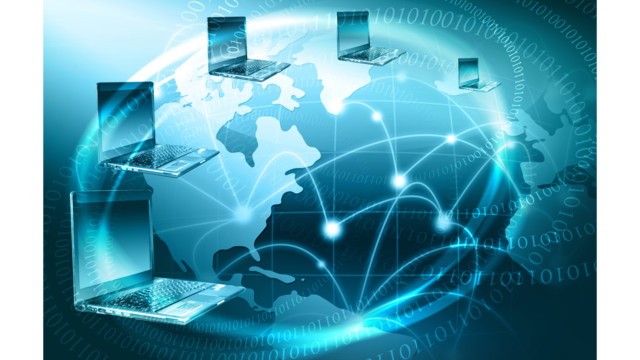The enterprise sales cycle is typically measured in months, if not years. Products and services are often complex, and when you’re helping companies automate their vendor payments like I am, you’ll end up working through some process changes. Quite often, the sale involves a significant amount of dialogue around changing the “status-quo”. As with most enterprise offerings, there are multiple stakeholders and decision makers, each with their own concerns about the impact of change.
Expert guidance at every step
To make sure everyone understands the value of change, and is comfortable with it, I like to bring in many people outside of the sales team at different points during the cycle. These include our internal subject matter experts and company leaders who can speak directly to their peers in the prospect organization
Early on in the sales process I usually bring in someone from our operations or solutions consulting team to help us dig deeply into the prospect’s current vendor payment setup. It helps to learn where the prospect is at, where they’d like to end up, and how our solution can take them there.
As people start to think about how their process is going to change, I bring in people from implementation, supplier enablement and/or operations. This helps to better explain what the impact will be to their suppliers, and what implementation will look like for their users. Later in the process, I bring in customer success and tech support people to talk about what they can expect after they go live.
Last year a government subcontractor client of ours was very concerned about risk and about information security. I brought in the head of our information security team to talk to their Chief Information Security Officer (CISO). They spoke each other’s language and our credibility skyrocketed.
The idea behind my process is to provide different perspectives, and to let people talk with others who have insights into their work. Similarly, to many salespeople in this kind of collaborative selling scenario, I act as master of ceremonies, bringing together the right people and putting together the right agenda for each prospect.
Frequent flyer miles
Before we moved to a more digital sales process, we were racking up those frequent flyer miles. Sometimes we’d fly to a far-away town for one meeting. We might end up spending several days somewhere between travel and meetings, keeping us from other work and costing the company money. We might also do it the other way around, flying prospects to our HQ. Taking up three days of their time, multiplied by however many people they’re bringing out.
We also used to spend a lot of time, effort, and money going to trade shows. We’d ship in booths and equipment and team members to man these booths to the tune of hundreds of thousands of dollars. After a year and a half of remote selling that looks really inefficient, even a bit antiquated.
The only digital part of our sales process was bringing in executives or subject matter experts remotely.
Effective but not efficient
Last year, when I was succeeding at sales without ever leaving the house, I had a lightbulb moment: Do clients even want to have face-to-face meetings?
According to research by McKinsey, more than three quarters of buyers say they now prefer digital self-serve and remote human engagement over face-to-face interactions, even in industries where field sales have long been the norm.
Don’t get me wrong–there’s value in meeting folks face to face, depending on the situation. In-person meetings are especially important for big deals where you need to establish a high comfort level. However, face-to-face sales meetings are a very time consuming, expensive way to sell, not to mention that some of the people you want to have there are going to have to dial in remotely anyhow.
Challenging Sales
Many of us who are in sales practice are at least familiar with The Challenger Sale. In a nutshell, it’s about understanding the customer’s problems, challenging the current way of thinking, and articulating things that they haven’t even thought about. Maybe it’s time to apply those principles to ourselves. We’re selling change to the enterprise, but how much have we changed our own processes in the past decade?
For example, look at how cars are being sold now. In the old days you’d have to go to the car lot, kick the tires, fill out paperwork, and sit for hours while the salesperson went to the back room and talked to their managers. I bought a lot of cars that way and every time it was an awful experience. Now you can pick out a car online and have it delivered to your home for a test drive. This process update had my gears turning (pun intended).
Better remote selling
It’s time to double down on remote sales and improve our processes. We’ve reached a point where we can sell pretty effectively using videoconferencing technology, but we can do even better. We can work with marketing to help us brand our online presentation materials and backdrops and level up our sound and lighting. We can use time not spent traveling to organize, polish, and practice our presentations and make them better.
Scheduling is the hardest part of team selling, since there can be as many as 10 or 15 people that need to be on the call, but that was hard with in-person selling too. We can use calendar software to help, or hire someone that’s dedicated to helping set up these meetings for the whole sales team. We can make better use of expert and executive time by establishing regular office hours where multiple sales people can bring their prospects to ask questions. We can do more frequent live demos and take questions from the audience. I’ve got a lot of ideas about how to improve remote sales. They’re all absolutely attainable, especially with the time we get back by skipping travel.
A team sport
Enterprise sales is a team sport. People buy from you first. Then they buy from your company and your product, more or less in that order. Personal relationships are primary, regardless of whether you’re remote or in-person.
I believe that there’s more of an opportunity to make these kinds of connections, and build confidence and trust, remotely. Partially because we already are succeeding at this, and because remote sales are less of an ask on the prospects’ time.
Virtual sales are efficient for sales people too. We can service more customers faster, which helps us accelerate the transition to automated vendor payments, or whatever kind of change for the better, that we’re selling.
=======
Doug Seaberg is Vice President of Regional Sales at Nvoicepay, a FLEETCOR company. His experience in the financial industry spans nearly 30 years, and includes positions held with companies like Wells Fargo. With Nvoicepay, he delivers scalable payment solutions to mid-market and enterprise companies.
Thanks for reading CPA Practice Advisor!
Subscribe Already registered? Log In
Need more information? Read the FAQs
Tags: Benefits




